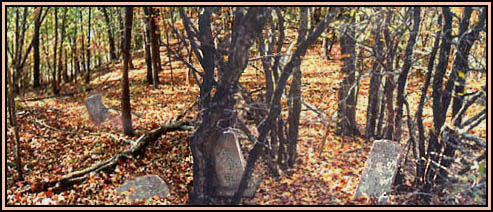


ONE of the more perplexing problems of genealogy
is finding missing graves. After we have exhausted the obvious sources for graves, such as city, church,
and known family cemeteries, we are forced to ask “where might we find the missing grave?”
Some possibilities:
1. The burial occurred outside the county and remains were not returned home.
People who were committed to state mental institutions and who died there may have been also been buried
at the instution’s cemetery. We find that often both the early records of those institutions and their
cemeteries have been destroyed. Additionally, when there are existing records, they may be withheld since some of
the institutions and others who hold the records may still be of the belief that having a mental disease carries
a social stigma. A search of home county court records may show commitment proceedings and if you find those,
be sure to look for family litigation over land.
Travelers who died out of county and especially out of state may have been buried where they died.
Even if the next of kin back home had been notified of the death, there may not have been someone
with the funds or inclination to bring the body back home.
In some rare instances, travelers were murdered and their bodies hidden. There are stories of settlers
being killed after they crossed the Ohio River from Kentucky by means of the infamous Ford’s Ferry.
It is said that the Cave-in-Rock gang got them. The bodies were hidden, the goods robbed, the wagons burned, and the
horses, cattle, &c., were sold.
Farmers and merchants returning from New Orleans were occasionally ambushed on the Natchez Trace, their
body cavities filled with rocks and their bodies sunk in creeks. The worst of times for these
evil happenings on the Trace was between 1810 and 1830.
It would seem reasonable though that most of the people who died away from home, did die of sickness
or accident. It is more probable that a Tennessee farmer, while on his way down the Mississippi River on his flatboat,
would fall off and drown, his body lost in the muddy deep, rather than to be murdered by brigands.
2. The burial occurred within the county of residence, and in a known cemetery, however
the grave can’t be found.
3. The burial occurred on the family farm, perhaps even in the family cemetery, however
neither the family cemetery or the grave can be found.
Knobs and Fence Rows
Little Depressions
Dowsing for Graves
Return to:
Project Home Page
Page © 2002 Fred Smoot

